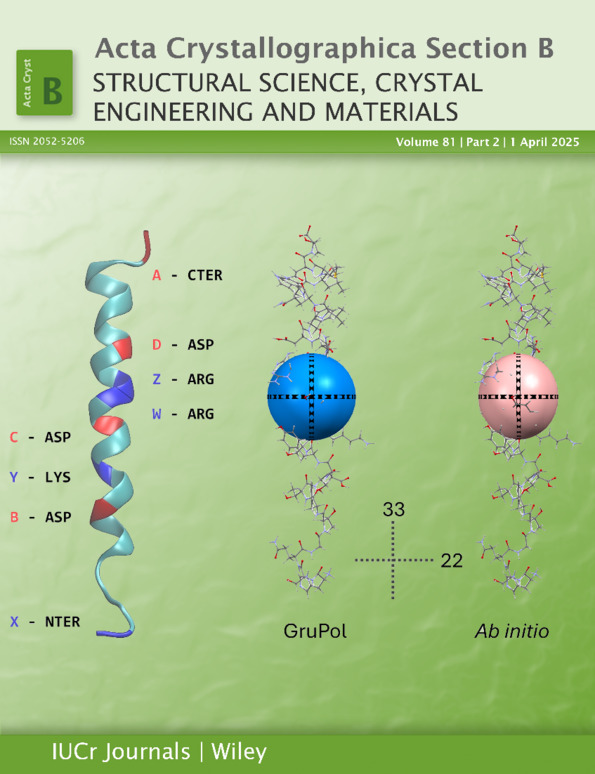Disorder- and magnetism-driven structural changes in Sm2Mn1–xGa6–yGey
Abstract
The crystal structure of Sm2Mn1–xGa6–yGey has been studied over a wide temperature range (180–430 K) using high-resolution single-crystal X-ray diffraction experiments. The compound belongs to a large family of filled AuCu3-type gallides and features a cubic F-centred structure created by alternating empty and Mn-filled p-element octahedra in a 3D-chequerboard pattern. Temperature dependence of the unit-cell volume reveals several narrow regions of negative thermal expansion (NTE) near the magnetic phase transitions. The structure analysis reveals that the appearance of NTE regions stems from the changes in the atomic coordinates and displacement upon the magnetic transitions. Between 375 and 400 K, an additional and purely structural transformation, is observed which is caused by the structure relaxation as a result of the structural defects.




